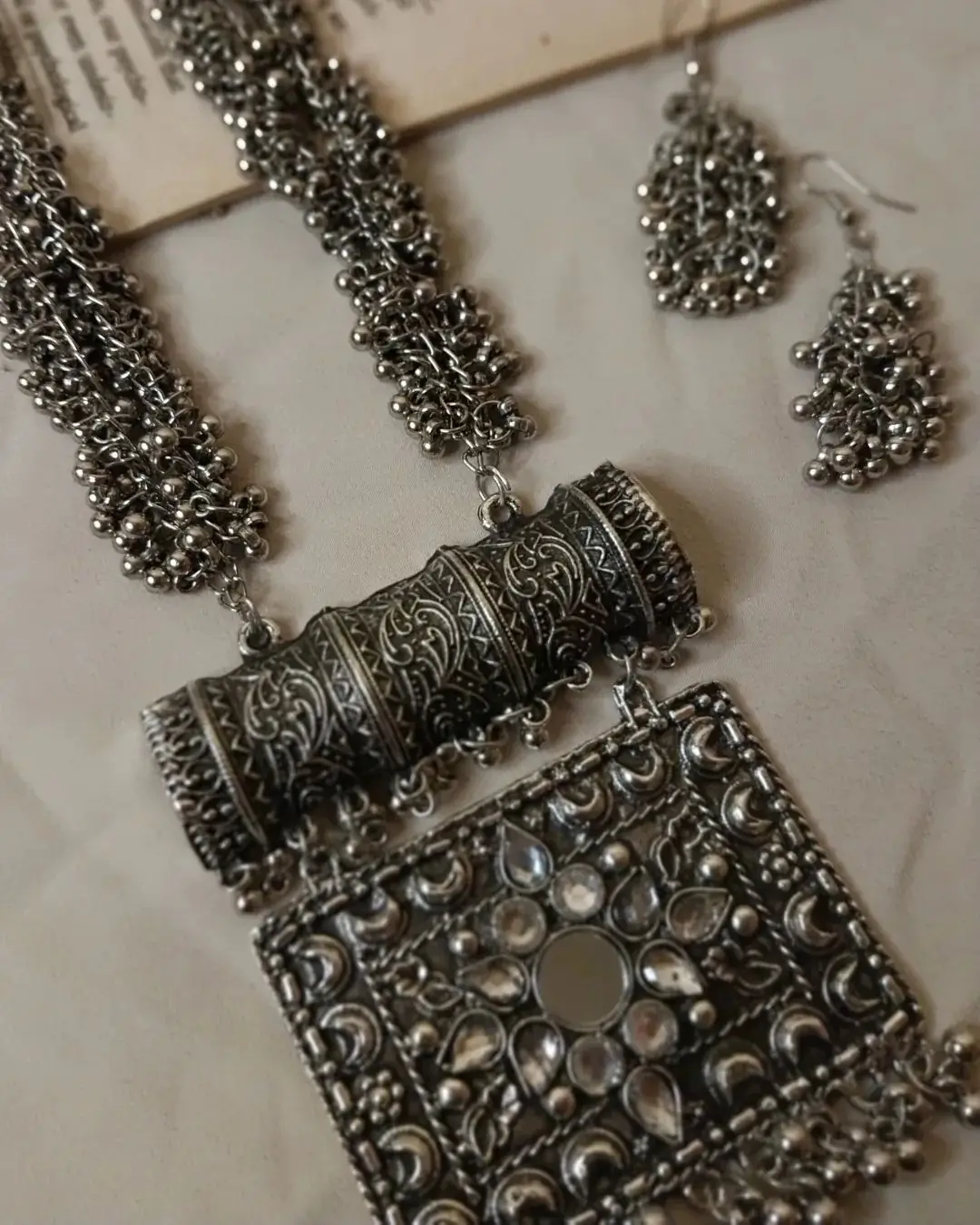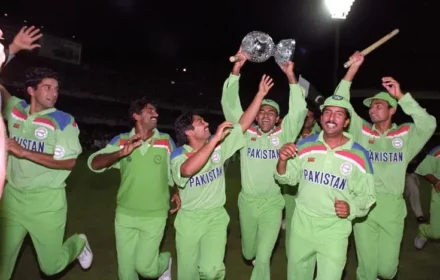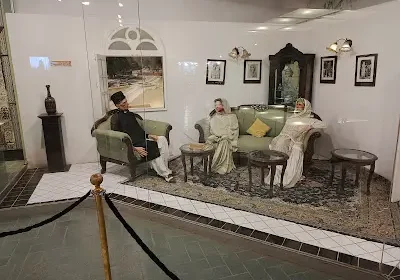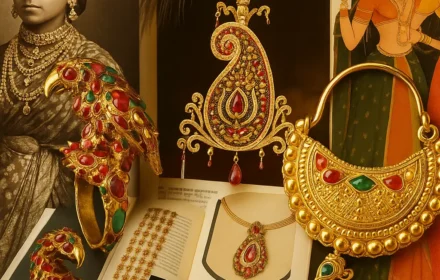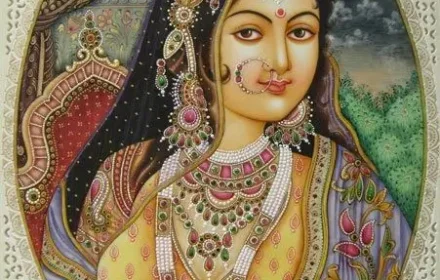Handcrafted silver mala with traditional motifs by NigarCraft
Long silver malas are more than just ornaments—they are wearable stories, woven through generations, cultures, and evolving fashion sensibilities. These dramatic yet elegant pieces have traveled from the dusty paths of tribal settlements to the spotlight of runways and urban wardrobes. In this blog, we celebrate their journey—from raw tradition to polished sophistication.
Origin: A Symbol of Identity and Culture
Historically, long malas have adorned the necks of tribal women in South Asia, Central Asia, and the Middle East. In regions like Tharparkar, Rajasthan, and Balochistan, silver jewelry was not only ornamental but symbolic—often denoting marital status, social rank, or spiritual beliefs. Each piece was handcrafted, sometimes passed down as heirlooms.
The use of oxidized silver and motifs like the sun, lotus, birds, and mirrors reflected local beliefs and the environment. The chunky, tactile nature of these malas made them ideal for rural life—durable, bold, and meaningful.
Design Evolution: Keeping Tradition Alive
With modernization, designers began fusing age-old motifs with contemporary aesthetics. Today’s silver malas still feature:
- Mirror work (as seen in the image above)
- Filigree detailing
- Floral and architectural motifs
- Hanging ghungroos or jhumkis
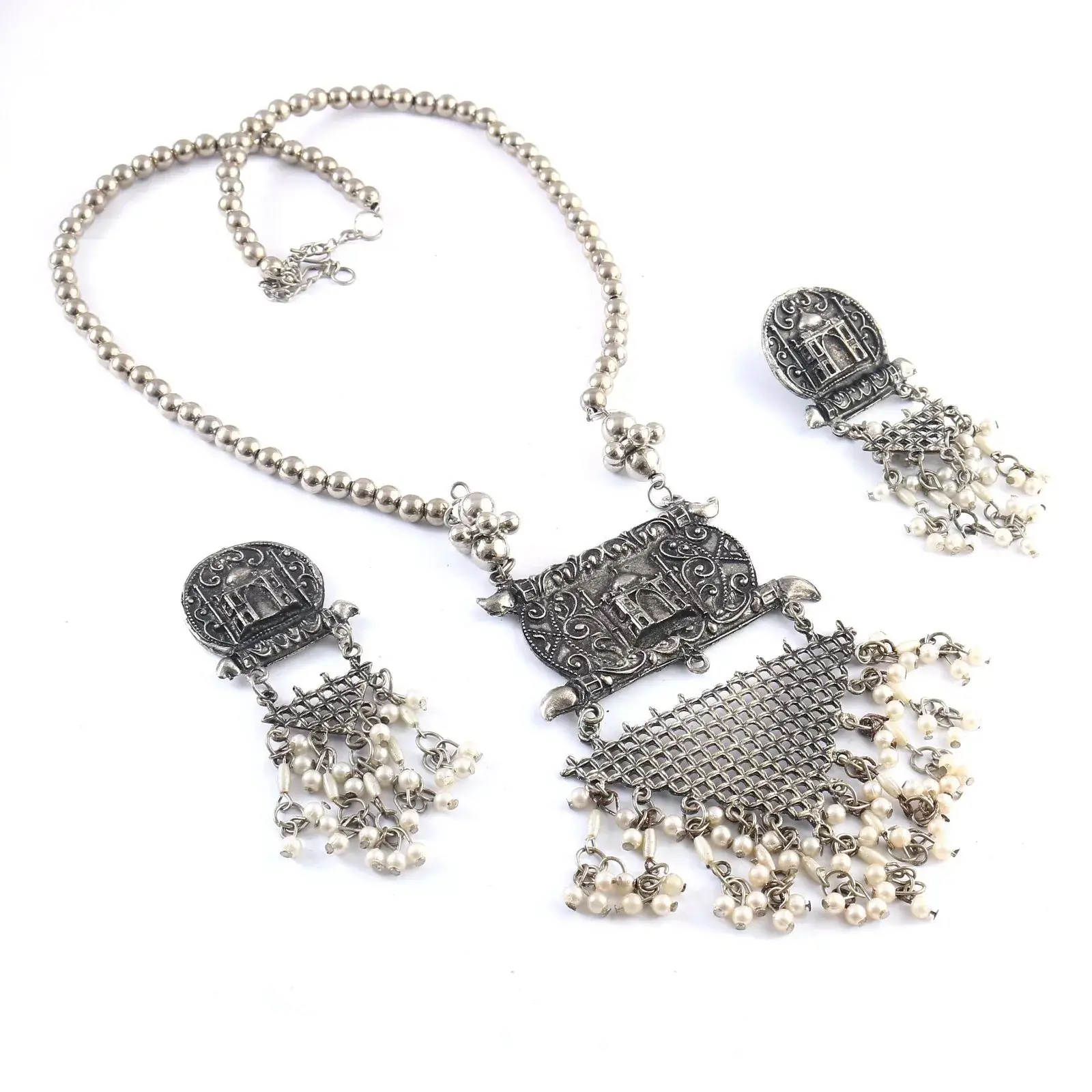
Urban elegance meets traditional craftsmanship with pearl-detailed malas
Some designs are even inspired by Mughal architecture or ancient temple art, giving each mala an identity of its own.
The Urban Transition: Glamour Meets Grace
What was once rustic is now fashion-forward. Urban fashionistas and celebrities are increasingly seen sporting long malas with:
- Linen saris
- Crisp kurtas
- Boho maxi dresses
- Even Western silhouettes like jumpsuits or off-shoulder tops
The key is contrast—pairing ethnic silver with modern cuts.

Styling Tips for Long Silver Malas
- Statement Look
Let the mala be your focal point. Pair it with solid-colored attire and minimal accessories. - Layering Game
Mix multiple lengths and textures—combine a long mala with chokers or bead necklaces for depth. - Fusion Styling
Style with indo-western outfits—like a black jumpsuit or white shirt and palazzos. - Festive Glow
Pair intricate malas with jhumkis and oxidized bangles for mehndi or dholki nights.

Beautiful tribal motifs and chain detailing reflect heritage craftsmanship
How to Care for Your Silver Mala
- Avoid direct contact with perfumes, sprays, or water
- Store separately in cloth-lined boxes or pouches to avoid scratching
- Clean gently with a soft cloth and silver polish if needed
- Avoid over-cleaning to preserve the oxidized look
Why Silver Malas Matter Today
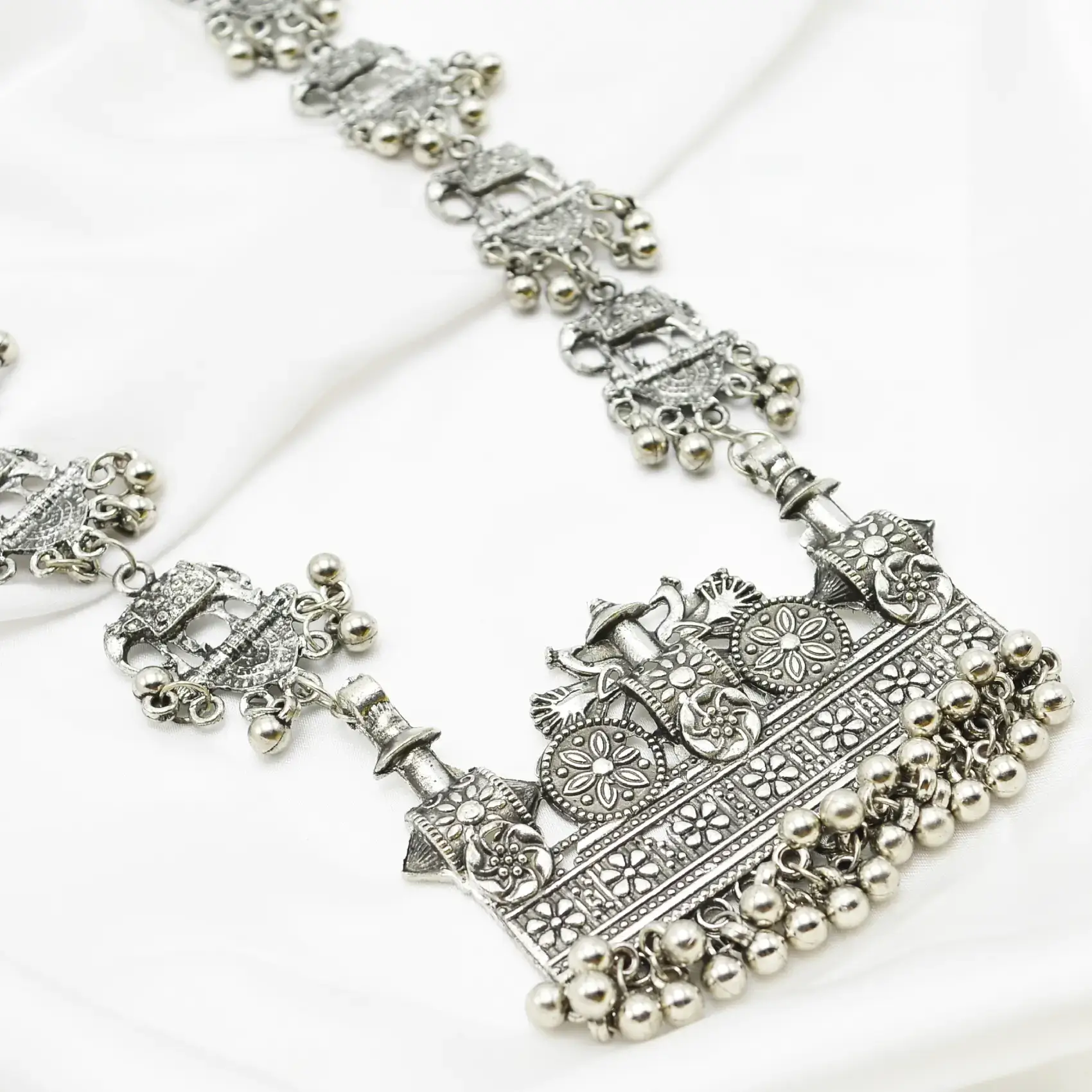
In a world of fast fashion and mass production, handcrafted malas stand as a tribute to sustainable beauty and artisan skill. They carry with them whispers of forgotten folklore, ancestral pride, and timeless elegance.
Whether worn to a music festival, a wedding, or just brunch with friends—these pieces let you wear heritage, unapologetically.
Where to Find Authentic Silver Malas
You can find stunning handcrafted pieces from platforms like NigarCraft that work with artisans across Pakistan to preserve cultural heritage while making it wearable for the modern muse.
Let your jewelry tell a story—because style is temporary, but heritage is eternal.
FAQs: The Journey of the Silver Mala
Q1: What is a long silver mala? A1: Long malas are more than just ornaments; they are dramatic yet elegant pieces of jewelry considered “wearable stories,” reflecting generations of culture and evolving fashion sensibilities.
Q2: Where do long silver malas originate from? A2: Historically, long silver malas have adorned the necks of tribal women in regions like South Asia, Central Asia, and the Middle East, specifically mentioning areas such as Tharparkar, Rajasthan, and Balochistan.
Q3: What was the original significance of silver malas in tribal cultures? A3: In tribal communities, silver jewelry, including malas, was highly symbolic. It often denoted the wearer’s marital status, social rank, or spiritual beliefs, serving a deeper purpose than mere decoration.
Q4: What are some common traditional motifs and design elements found on silver malas? A4: Historically, malas featured oxidized silver and motifs like the sun, lotus, birds, and mirrors. Modern designs continue to incorporate mirror work, filigree detailing, floral and architectural motifs, and hanging ghungroos or jhumkis. Some are also inspired by Mughal architecture or ancient temple art.
Q5: How have silver malas transitioned into modern urban fashion? A5: What was once considered rustic is now fashion-forward. Urban fashionistas and celebrities are increasingly seen pairing long silver malas with a variety of outfits, from traditional linen saris and crisp kurtas to boho maxi dresses and even Western silhouettes like jumpsuits or off-shoulder tops. The key is to create a contrast.
Q6: Can silver malas be styled with Western outfits? A6: Yes, absolutely. The blog notes that long silver malas are increasingly being styled with Western silhouettes such as jumpsuits or off-shoulder tops, and also suggests fusion styling with Indo-Western outfits like a black jumpsuit or a white shirt paired with palazzos.
Q7: What are some recommended styling tips for long silver malas? A7: The blog provides four key styling tips:
- Statement Look: Let the mala be the focal point by pairing it with solid-colored attire and minimal other accessories.
- Layering Game: Combine the long silver mala with other necklaces of different lengths and textures, like chokers or bead necklaces, for depth.
- Fusion Styling: Wear it with Indo-Western outfits such as a black jumpsuit or a white shirt and palazzos.
- Festive Glow: Pair intricate malas with jhumkis and oxidized bangles for festive occasions like mehndi or dholki nights.
Q8: How should I care for my silver mala? A8: To care for your silver mala, you should:
- Avoid direct contact with perfumes, sprays, or water.
- Store it separately in cloth-lined boxes or pouches to prevent scratching.
- Clean it gently with a soft cloth and silver polish if needed.
- Avoid over-cleaning to preserve its unique oxidized look.
Q9: Why are handcrafted silver malas significant in today’s world? A9: In a world of fast fashion, handcrafted silver malas stand as a tribute to sustainable beauty and artisan skill. They carry whispers of forgotten folklore, ancestral pride, and timeless elegance, allowing wearers to embrace heritage.
Q10: Where can one find authentic handcrafted silver malas? A10: Authentic handcrafted silver malas can be found from platforms like NigarCraft, which work with artisans to preserve cultural heritage and make it wearable for modern individuals.

